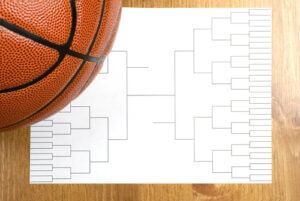Career Advice for Job Seekers
Why Big Wins are Good for Colleges But Bad For Potential Students
It’s almost time to start talking about this year’s NCAA Tournament — but not for the reasons you think. Turns out, enrollment often goes up once a school makes it into the Elite Eight or the Final Four, and while that’s good for the college or university in question, it’s less good for the matriculating first-year student hoping for individualized attention and a leg up on his or her peers.
We all know about supply and demand, right? Well, the same goes for college. If the demand goes up, the supply goes down. Whatever school wins this year’s NCAA Tournament is going to see a spike in applications, due to both its increased visibility and its association with success. However, if demand for spots in the school goes up, the odds of you getting one of those coveted admission slots goes down.
As most high school students know, every year it gets harder and harder to land a spot at a good school. Students’ SAT scores, ACT scores, grade-point averages, and extracurricular achievements are through the roof. Harvard, for example, rejects approximately one in four applicants with perfect SAT scores. In this educational economy, it is possible to do everything right and still not get into the college of your choice.
So be wary of the schools that advance in the NCAA bracket this year. The closer they get to victory, the harder it’ll be to join their ranks as an enrolled student. There is plenty of precedence, of course, for this cause-and-effect. I’ll quote an article on sports and enrollment run by St. Mary’s College of California:
“After George Mason University’s magical Final Four run in the NCAA Basketball Tournament in 2006, applications jumped 22 percent in the following year. And at Butler University, after its first appearance in the NCAA Tournament championship game in 2010, applications jumped from 6,760 to 9,518.”
And those are only the applications. Let’s say a school takes advantage of this sudden admissions frenzy and opens up a few extra slots in next year’s class. Good for you, right? Well, not necessarily. The higher the student-to-teacher ratio, the less likely you are to get the individualized attention and mentoring that ensures educational success — not to mention helps you prepare for that all-important first job after college. More incoming students means bigger lecture classes, fewer office hour slots to go around, faculty who have to grade a higher number of papers in the same amount of time.
More students also means a larger community of educational peers: good if you’re looking to make friends or find that special someone, bad if you want to stand out or achieve academic distinction. There’s a sweet spot, where first-year class size is concerned; too small and there aren’t enough opportunities for the kinds of spontaneous peer interactions that define the college experience, too large and you feel like you have to compete with everyone to even be allowed to participate — in student government, in intramurals, in the Greek system, in band and choir and basketball and everywhere else.
So, let’s put it this way: unless you’re a top-flight basketball player (in which case, you’ve probably already started your own college recruiting process), don’t pay too much attention to which school wins the NCAA Tournament. Yes, play the brackets and enjoy the competition, but don’t look at the winning school as a potential enrollment option. Not unless you want to have to work a bit harder for a slightly lower economic reward.
New Job Postings
Advanced Search